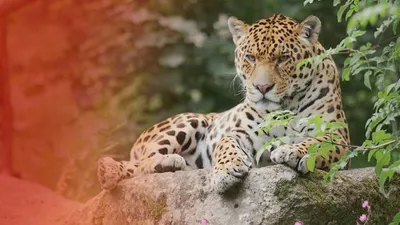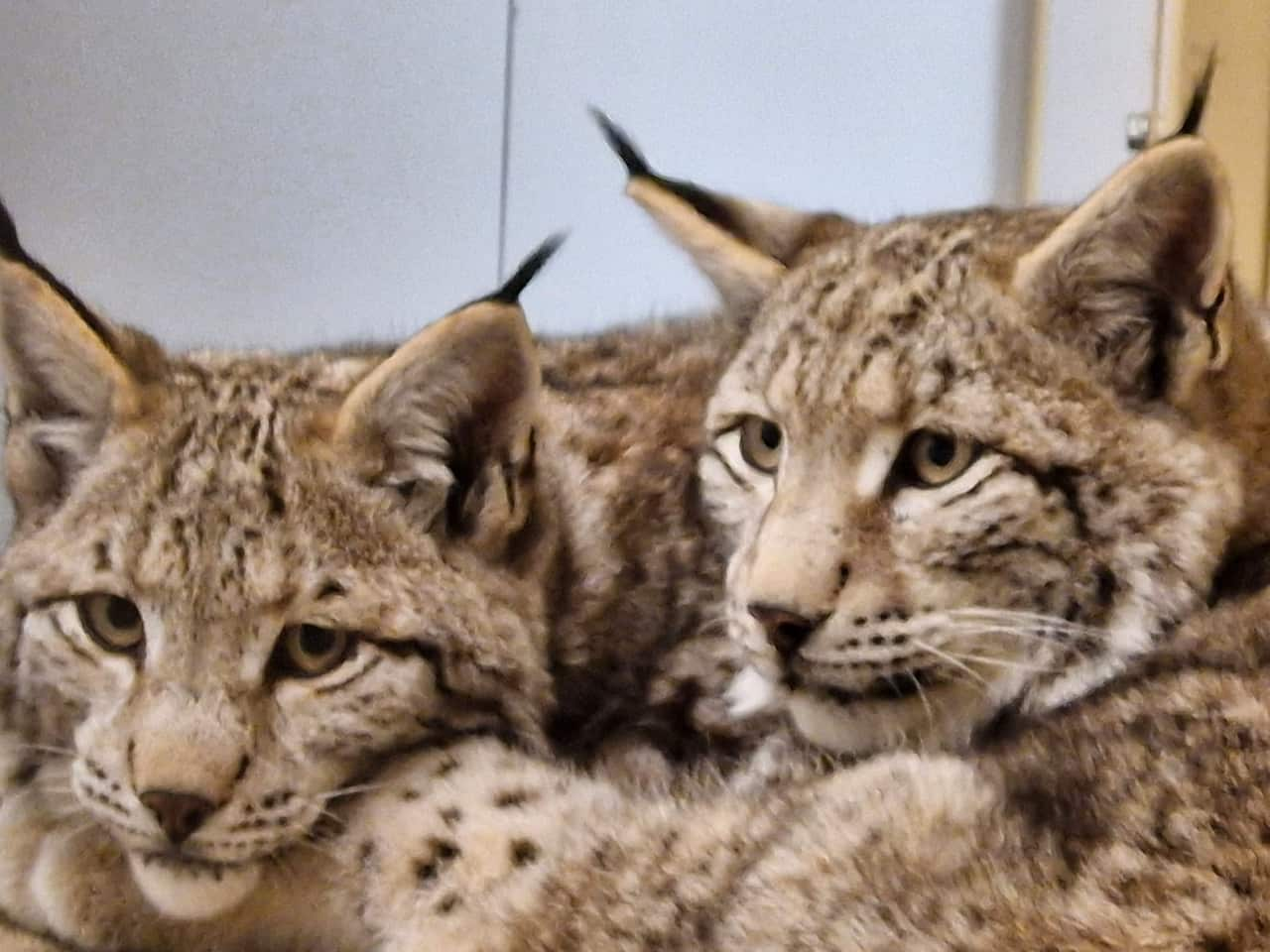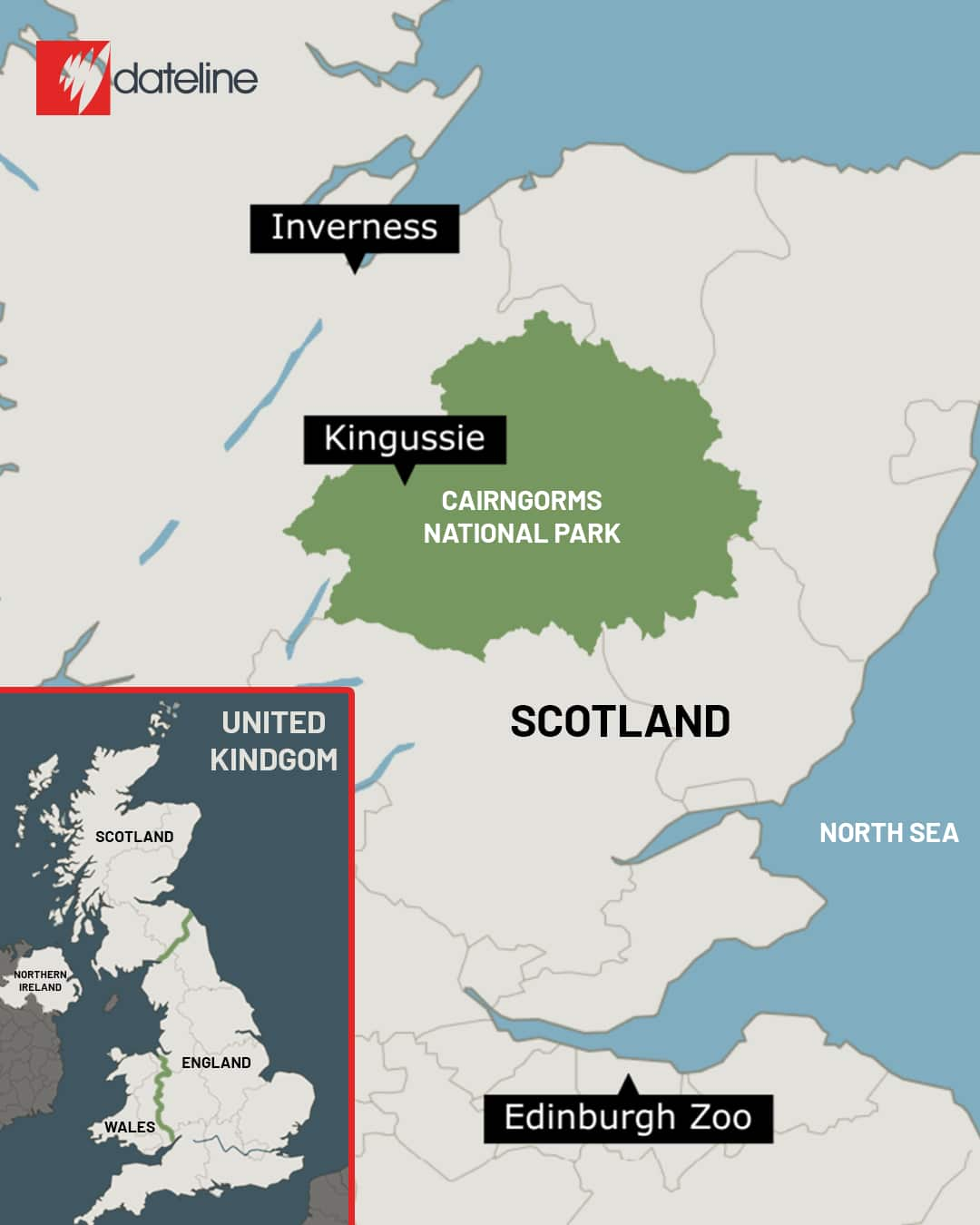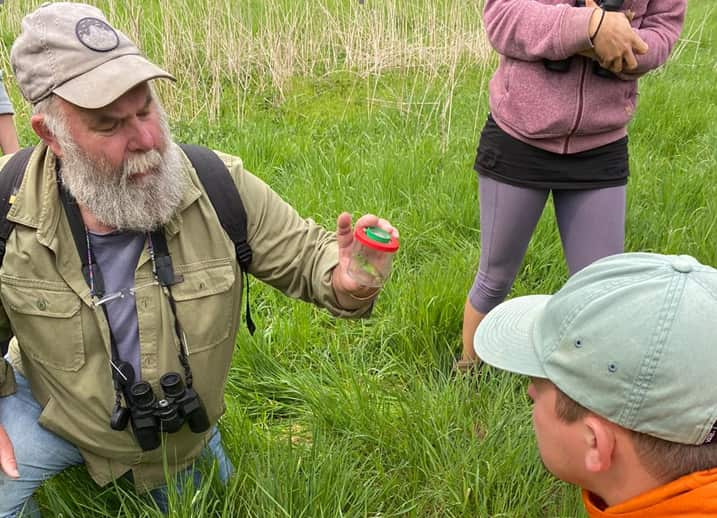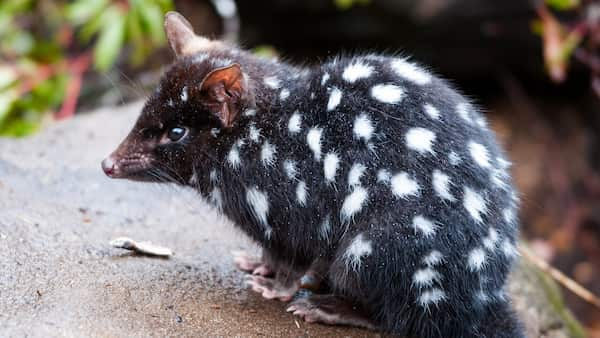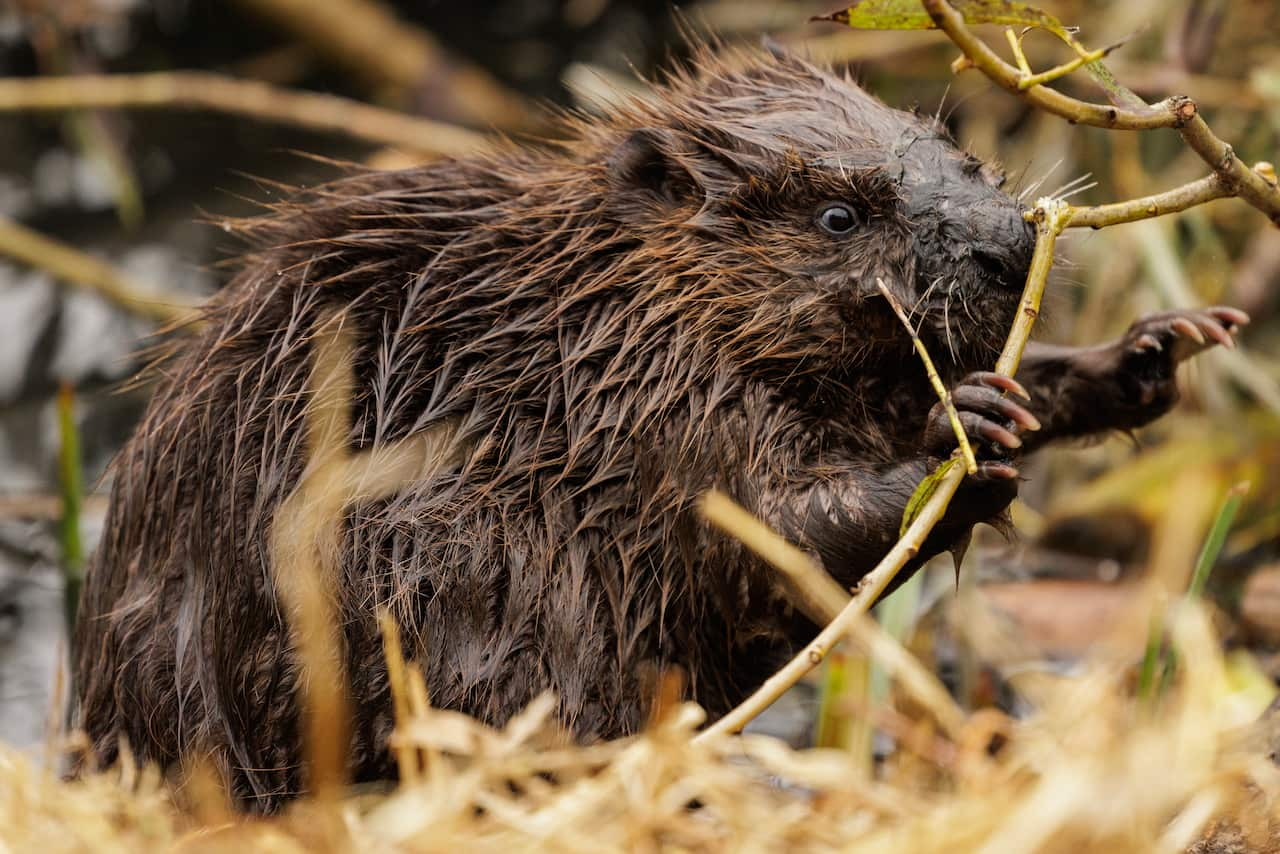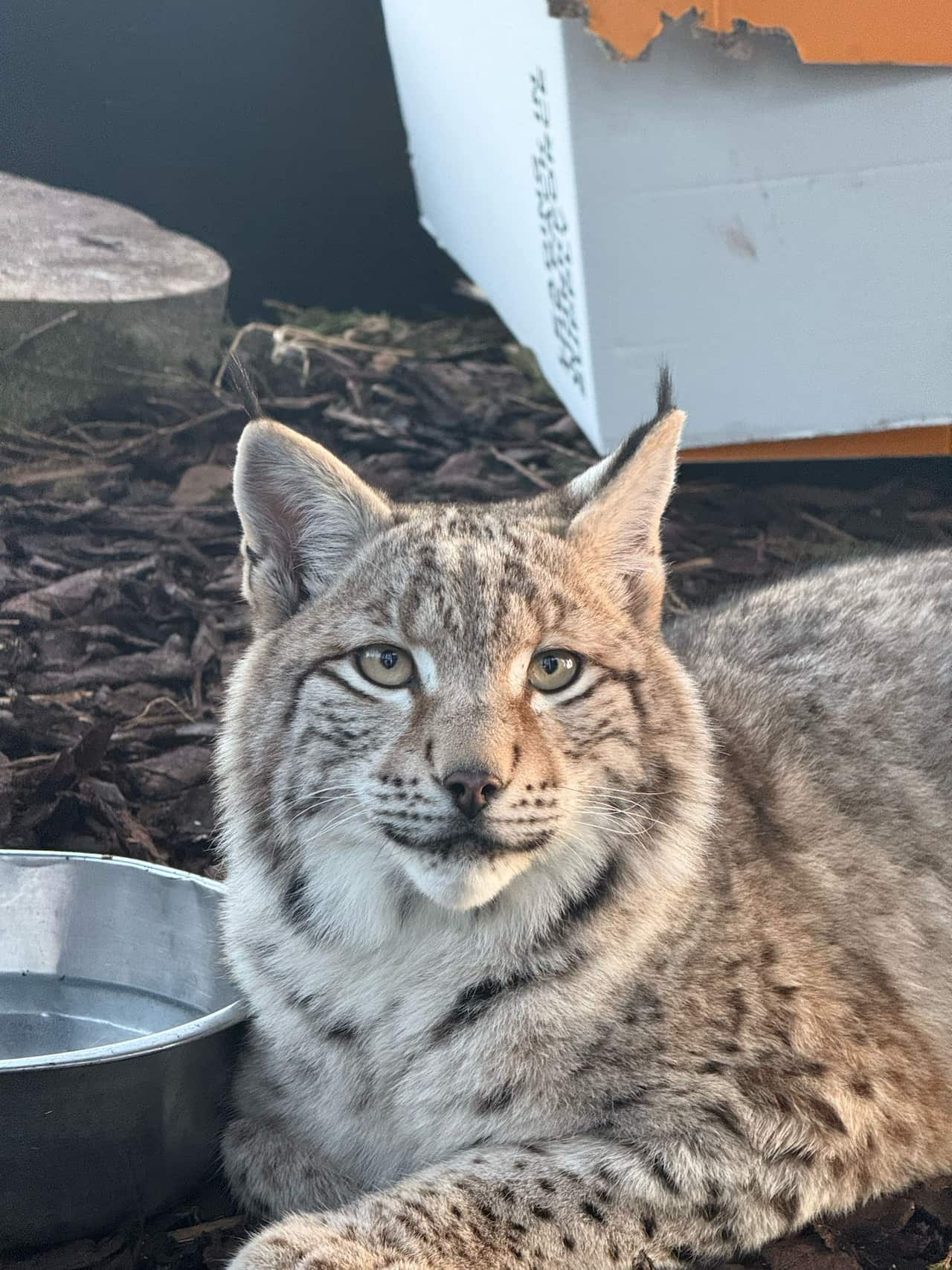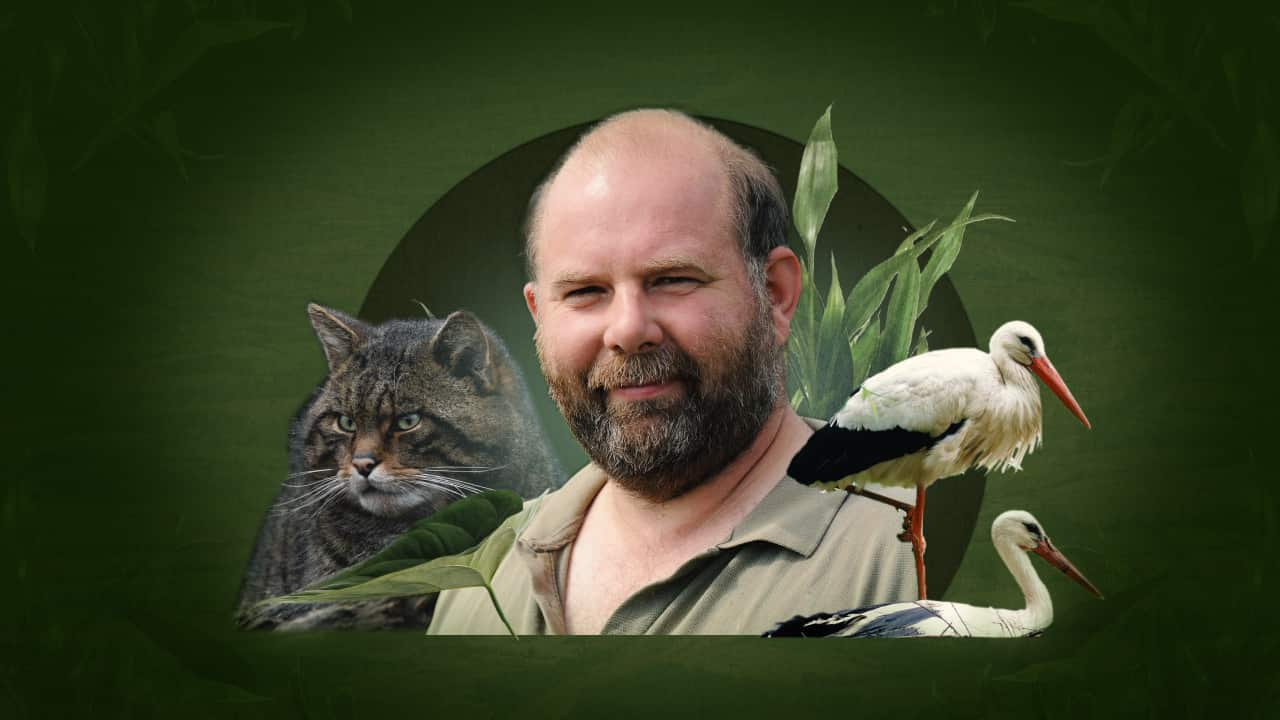It’s a sub-zero January night in the Cairngorms National Park in the Scottish Highlands and thick snow has settled on the forest floor.
A Eurasian lynx, not seen in the wild here since medieval times, hops silently over a fallen pine tree.
Lynx are shy and elusive animals, which keep their distance from humans; but this one appears undisturbed by the torchlight tracking its movements.
Zookeepers from the Royal Zoological Society of Scotland’s (RZSS) Highland Wildlife Park are out in the freezing night trying to capture the wild cat and another lynx spotted near a road by a shocked member of the public.
They lay traps baited with venison and quail. The next day the two lynx are safely captured and heading to Edinburgh Zoo, some 180km south, for a period of quarantine.
Two of the captured Eurasian lynx in quarantine at Edinburgh Zoo.
The strange story of the mysterious lynx makes international news — and then there’s more. A day later Police Scotland say two more lynx have been spotted and another hunt begins.
They too are swiftly captured, but this time one of the lynx dies overnight. The RZSS said the animals were too domesticated — instead of thriving in the wild, they were starving. Three of the lynx were female and less than a year old. The lynx that died was a male.
The zoo said recently the three female lynx were doing well and it planned to rehome them.
Rogue rewilding
There is yet no confirmed explanation as to how four lynx appeared in the UK’s largest national park, but there is a theory: the lynx were intentionally released by individual activists or groups in a phenomenon known as ‘rogue rewilding’.
In a similar case just a month later, Cairngorms National Park rangers were trying to round up more wild animals. This time 20 wild boars were roaming the same woodland where the lynx were caught. This is despite wild boars being extinct in Scotland for more than 700 years.
UK law concerning rewilding is complex but allows some native species to be reintroduced after consultation, assessment and licensing. But the Dangerous Wild Animals Act of 1976 restricts the release of animals including lynx and wild boar.
Thomas Cameron, a professor of applied ecology at Essex University, told Dateline that people who undertake rogue attempts to rewild or reintroduce species to an environment without the consent of authorities or landowners, believe that the species has a right to exist there.
“Often their main motivation is a moral belief that because there is evidence that the animal lived there in the past, and was removed by man, it should now be put back,” he said.
“There is also a utilitarian argument made for some species which perform a function: that their reintroduction can benefit landscapes, environments or even humans.”
Both the lynx and 20 wild boar were found in woodland near the highland village of Kinguisse in Scotland’s Cairngorms National Park.
Beaver bombers
Renegade rewilder Derek Gow has championed the reintroduction of the beaver to Britain.
The conservationist, author and former sheep farmer credits himself for legally importing the great, great grandparents of beaver kits (babies) due to be born in British waterways in the coming spring.
“To be clear, we always work within what laws there are,” he told Dateline.
“If there is no law or there’s no licence required to do something then we don’t go around asking whether we can find one. We just jolly well do it.”
Derek Gow has played a significant role in the reintroduction of the Eurasian beaver, water vole and the white stork to England.
Those that covertly or illegally reintroduce beavers to waterways, as has happened all across Europe, are known as ‘beaver bombers’.
Beavers were hunted to extinction in Britain in the 16th century but have been reintroduced both through sanctioned conservation projects and so-called ‘beaver bombing’ incidents. In 2022 they were once again recognised as native species and protected in England and Scotland.
Gow has “three or four” beaver families living on his 300-acre (121-hectare) farm in Devon in south-west England, which he has been rewilding for around five years. He says they have transformed the landscape in favour of nature.
“They have built dam systems in the water courses and because the beavers have also created burrows through the sides of them, it has formed baby channels. They have captured and slowed that flow of water incredibly effectively.
“And because there’s water through the breeding months of the summer, there are now frogs, newts, dragon flies, diving beetles, and a whole host of other creatures that are small and live in the water. Then big animals come to hunt them and red deer come down to drink at the water’s edge and nature starts to reform.”
Gow said he began rewilding his land as he was concerned about leaving behind a legacy of destruction from years of intensive farming.
‘I saw the last of the curlews, the last of the whimbrels, the last of the short-eared owls (all birds). And slowly and steadily you realize that when [farming], you’re just skinning the earth to produce something ruthlessly at the expense of all other life.’
Gow believes the climate crisis will accelerate beyond the conservative predictions of scientists and says rewilding and species reintroduction is about a grassroots movement fighting back.
“I meet people who own 50 acres, 20 acres, or just two acres, and they are so worried about was happening to the planet that they just want to do good.
“I think we have a moral imperative on this.”
Gow also breeds once-extinct or endangered species on his land, including Iron Age pigs and lynx, but he denies having anything to do with the cats that were abandoned in the Scottish Highlands in January.
In fact, given the government’s response, he thinks the incident has set back the cause species introduction, at least in the short-term.
‘Nature-depleted’ Britain
Rewilding Britain, a charity which funds rewilding projects and advocates for the restoration of nature across 30 per cent of Britain’s land and seas by 2030, defines rewilding as ‘the large-scale restoration of ecosystems to the point where nature is allowed to take care of itself’.
and conducted by YouGov found 81 per cent of Britons supported the idea of rewilding.
The UK was ranked one of the most nature-depleted countries on earth, according to the .
Cameron says there is a difference between rewilding and species reintroduction, but they can complement each other.
“The benefits to reintroducing animals such as beavers are real. Beavers can help reduce flooding for towns and villages if managed well. But if they’re not contained, they can also build dams which cause flooding, since they’re unaware of where humans have built their settlements,” he said.
A beaver family reintroduced to a west London wetland marked the first time in 400 years that the rodents have been seen in the British capital. Credit: Dan Kitwood/Getty Images
Cameron says illegal or covert rewilding attempts like ‘beaver bombing’ may be well-intentioned but has the adverse consequence of putting landowners in conflict with the animals.
“Since beavers were not recognised as existing in Scotland for a long time landowners had every right to shoot them. So, it would be better if these reintroductions were managed officially.
“But the process is painfully slow. Rewilding can have extraordinary benefits quite quickly and many conservationists are frustrated and just want to get on with it.”
A solution to climate change?
In February 2025 a study by researchers at the University of Leeds estimated that a population of 167 wolves living in Scotland could significantly reduce the nuisance red deer population, in turn allowing woodlands to regenerate and sequester carbon dioxide from the atmosphere. The study’s lead author said the climate and biodiversity crises “cannot be managed in isolation”.
Cameron enthusiastically advocates for species introduction but has a warning for anyone who hopes it could help solve the climate crisis:
“It is an utter delusion to claim that the reintroduction of lynx, wolves or any other animals could have any significant impact on solving the climate crisis in any timescale that would be helpful.
“When we consider the diet and kill rates of lynx or wolves, models show we’d need unacceptably large numbers to help us naturally manage the deer populations that degrade the environment we want to restore.”
Cameron said the public should be aware of false promises, which amount to disinformation in the conservation community.
Lynx on the loose
is a charity that advocates for a trial reintroduction of lynx to the Highlands, where it argues there is enough connected woodland habitat and deer to sustain a population of the predators.
Despite the charity’s aims, it condemned January’s release of lynx in a statement as, ‘irresponsible and illegal’ and said it was ‘counterproductive’ to the organisation’s aims.
The prospect of lynx roaming the wild is a particular concern to farmers worried about their livestock.
In January, the president of the National Farmers Union (NFU) in Scotland wrote to Scotland’s agriculture minister and acting climate action minister saying: “the illegal release of species onto our rural land is a wildlife crime” and that the offenders must be “justly prosecuted”. He also said local farmers had been predicting such an incident would soon occur.
The issue is so concerning to some farmers that at an NFU conference in February, Scotland’s First Minister John Swinney promised them that no lynx or other large carnivorous species would be reintroduced under his government.
The Eurasian lynx was once hunted to extinction across much of Europe but has been successfully reintroduced to countries such as Germany, France and Switzerland.
Gow said the first minister’s statement was meant to appease farmers who do not want the old social order challenged. He hopes elections next year will produce a leader more sympathetic to the cause of species re-introduction.
“Rewilding is kind of picked on by these alarmist lobbies because they see it as a very easy target. They say ‘you’re taking land out of food production; you’re bringing back animals that one day might eat a sheep!’
“Well, that’s all true, I suppose. But at the end of the day, we’re working with relatively small areas of land and we’re working to restore the poorest land anyway.”
Gow says he’s now turning his attention to reintroducing black grouse, black storks and wildcats. When it comes to the prospect of lynx returning to the Highlands he appears pragmatic but optimistic:
“It’s not that these creatures can’t survive in landscapes like ours, it’s that Scotland, like Australia, has too many bloody sheep,” he said.
“They produce nothing that’s of any great value,” he said, while also claiming their waste, if contaminated by farm chemicals, could kill the soil.
“[Farmers] don’t like change, and they don’t like the idea that their ancient ideas will be swept away because they’re redundant and wrong.
“It’s not quite a mass movement yet, but a lot of people are talking about rewilding. It was never talked about a quarter of a century ago. So that’s a good thing.”
